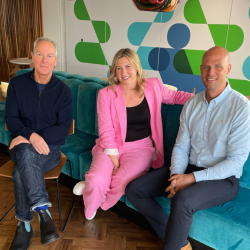Composable commerce has been hyped as the future of ecommerce…
In fact, it’s basically a given that it’s necessary for businesses to stay ahead of the curve. This is because it promises flexibility and customisation — the modular concept allows businesses to select and assemble the ecommerce components that best suit their unique requirements. It’s a shift from the one-size-fits-all model to a more agile, tailored approach, enabling businesses to respond swiftly to market changes and customer demands.
It’s got to the point where some businesses are a little green-eyed. A survey found that over a third of respondents feel jealous of competitor commerce offerings because of their agility. Perhaps it stems from the belief that this transformation is relegated only to the digitally mature.
But it’s not only the elites like LEGO or Mars that can implement composable. It’s not a surprise that this would be the thinking. Even for the most skilled in-house digital leaders the challenges of moving to composable commerce can be significant, and misconceptions rule the roost. Cutting through the ‘clutter’ of what is needed is, perhaps, nearly as tricky as embarking on the journey itself. Naturally this can leave businesses thinking they have to make do with what they’ve got. It’s time to turn this thinking on its head, because fears like these impede organisations from modernising their commerce infrastructures, compromising performance and reducing costs over time. While it can be challenging to start with, and the experience of each business depends on its starting point, requirements, and size, some considerations are universal and will help cut the composable complexity.
All aboard on processes and data
Technology is the first line of thought for obvious reasons, but processes and data are critical factors that must be implemented into the strategy. As more technologies are adopted, a clear structure of standard operating procedures becomes necessary. Streamlining APIs to have a coherent flow of data between different systems in the composable set-up ensures that the organisation has strong governance and improved agility over time.
In fact, digital commerce is heavily dependent on data. Reliance on legacy platforms that lack modern data management capabilities means that companies can struggle with data silos as well as inefficient data processing.
A more flexible model allows companies to customise data structure, adapting it according to new tech, market conditions and customer expectations. So, take a step back. Take the time to assess your data, clean and enrich it, and devise strategies for leveraging it. This process will help shape the customer experience since it is inherently linked to the data management used.
A pick ‘n’ mix of best of breed
Selecting vendors is a crucial aspect of transition, as the right selection will empower a business with flexibility and efficiency. This means research — and lots of it. Businesses should begin by identifying the tools essential to specific business operations and then compile a list of potential vendors that offer these solutions. This will ensure that vendor solutions align completely with business objectives. What does innovation and flexibility look like to you? Do you have the right developers and tech experts on board?
In all honesty, a strategic agency partner is often vital in getting the right guidance for a technology roadmap and, therefore, getting project delivery done slicker and quicker. No business wants to be hanging around while their site is under construction. For example, in our work creating the award-winning composable architecture for MKM Building Supplies, identifying the high-level requirements and technical architecture in an early discovery phase helped to migrate MKM to their new architecture in less than a year. Again, this roadmap should align with the business strategy and desired timeline for digital transformation.
Using a composable architecture of best of breed systems allowed MKM to move its operations to cloud services, without compromising its unique business identity or limiting its commercial offer and user experience.
Ultimately, composable allows a business to adapt. Imagine plugging in advanced search capabilities or AI into a commerce platform. In a legacy environment connecting AI tools would take months of meticulous planning, resulting in higher costs and longer implementation times. Comparatively, a composable approach lets you seamlessly integrate new features, experiment, and see what works and what doesn’t. In short, your business can become more digitally mature, adaptable, and resilient. A vendor falling short doesn’t mean the end of play.
Get out your wallet: let CFOs sleep easy
While this all sounds great, one significant stressor lies unaddressed: the wish to make specific improvements without changing the whole platform. Naturally, a business that’s spent a long time trying to update its website (in a way that just can’t happen with the restraints of a monolithic platform) will be hesitant to lose its investment in one fell swoop — especially knowing that this means forking out a ton of cash for the updated architecture.
However, the transition to composable isn’t like the transition from legacy to legacy, which does take years and costs a lot of money. It doesn’t need to be a major re-platforming project.
Organisations embracing composable business’s building blocks and principles can successfully leverage existing digital investments. It’s about modernising legacy platforms with several small steps to improve specific interaction points and services. Moreover, additions to an existing platform at a component level ensure no sudden panic to completely transform once an existing platform is outgrown, unsupported, or even breaks. Returning to MKM, it will not be tied to a monolithic application suite in the future, reducing the cost and risk of system dependency while unlocking opportunities to expand to new experiences and channels.
The result was a massive 197k+ registered customers and a 77 per cent boost in average time on page. If you’re beginning this journey, understanding your technical and business needs, evaluating current digital infrastructure, and considering the existing skills and resources are essential. If you’re not currently composable, your website is probably coming to the end of life. But you can resuscitate.
Featured image: Kaleidico / Unsplash































